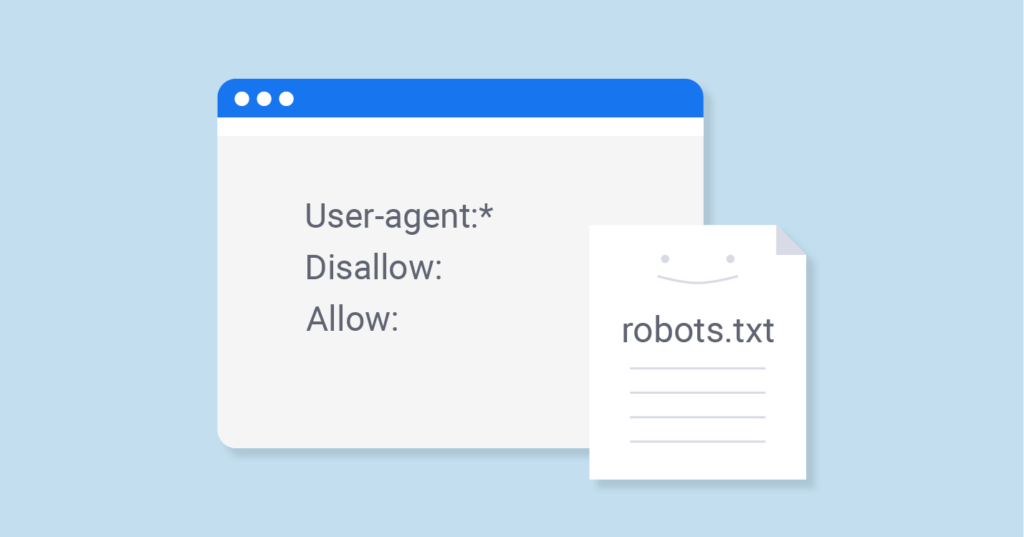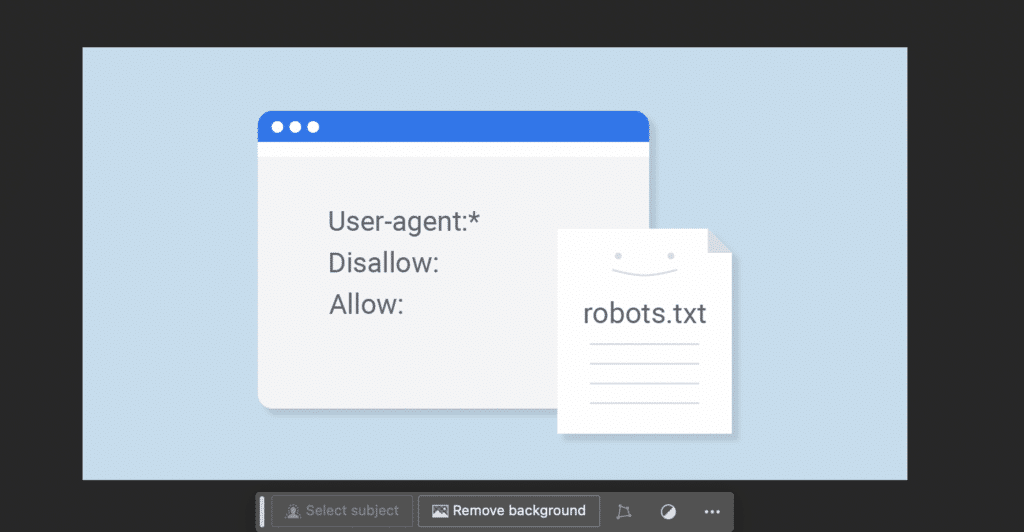
Implementing SEO Best Practices in Web Development
Table of Contents
TLDR
The importance of SEO in web development is highlighted, focusing on optimising websites for search engine visibility and ranking.
Key areas include technical optimisation for efficient crawling, creating engaging content with relevant keywords, and utilising off-page strategies like link building.
Developers are encouraged to integrate SEO practices early to enhance website discoverability and user experience, improving search engine rankings and digital presence.
Listen to the Article
The voice and reading of this article were created with artificial intelligence.
SEO Best Practices in Web Development

Understanding the Vital Role of SEO in Web Development
I’ve spent countless years developing websites and exploring search engines’ intricacies, and I realised the importance of SEO in web development. It’s not just about creating aesthetically pleasing interfaces or deploying the most advanced code; it’s about ensuring your website is discoverable, accessible, and ranks well on search engine results pages (SERPs). This understanding has significantly shaped my approach to website development, pushing me to consider SEO not as an afterthought but as a fundamental aspect of the design and development process.
The Three Pillars of SEO: A Developer’s Perspective
Technical SEO:
Technical SEO is the bedrock upon which effective SEO strategies are built. It encompasses the aspects of SEO that allow search engines to crawl and index a website efficiently. From a developer’s standpoint, this means ensuring the website’s architecture is search engine friendly, implementing SSL for security, optimising site speed, and providing mobile responsiveness.
On-Page SEO:
On-page SEO focuses on optimising the content of the website itself. It ensures that each page is structured around target keywords while maintaining a natural and engaging user experience. This includes optimising title tags, headings, and meta descriptions and ensuring high-quality, relevant content.
Off-Page SEO:
On the other hand, off-page SEO relates to the external factors that impact a website’s ranking. This primarily includes backlinks from other reputable sites. It’s the equivalent of a building’s reputation in the neighbourhood. Just as a well-regarded address can increase a property’s value, a strong backlink profile can significantly boost a website’s ranking on SERPs. As developers, while we may have less control over this aspect, understanding its importance encourages us to build websites worthy of being linked to.
• • •
Understanding SEO in Web Development

The Essence of SEO in Web Development
The significance of SEO in web development cannot be overstated; it’s the bridge that connects a website to its audience.
The Developer’s Crucial Role in SEO
As web developers, we wield the power to mold the digital clay into forms that search engines find appealing. Our role in enhancing SEO starts with the technical foundation of a website. This encompasses optimising site speed to reduce bounce rates, ensuring mobile responsiveness for a vast audience, and implementing SSL certificates for secure connections. Moreover, our responsibility extends to structuring data so search engines can easily understand and index, which involves properly using HTML tags, creating sitemaps, and efficiently managing redirections.
Our contribution to on-page SEO is equally vital. By collaborating closely with content creators, we ensure that the content is valuable, engaging and structured in a way that optimises it for targeted keywords. This symbiosis between development and content strategy is crucial for enhancing the user experience and boosting SEO performance.
• • •
The Intersection of SEO and Web Development

The Significance of SEO in Web Development
SEO is the bridge connecting the technical prowess of web development with the strategic goals of digital visibility and user engagement. It’s a complex dance of algorithms, keywords, and user experience, where the ultimate goal is to rank as highly as possible on search engine results pages (SERPs). This isn’t just about attracting clicks; it’s about delivering content users find valuable, engaging, and worthy of their time.
The Developer’s Role in Elevating SEO
Crafting the Technical Backbone
This involves creating a website that search engines can easily crawl and indexable. Key aspects include optimising site speed, ensuring mobile responsiveness, and implementing secure connections through SSL certificates. These elements are crucial for a website’s usability and security, directly impacting its search engine ranking.
But our role doesn’t end there. Another critical responsibility is structuring data effectively so that search engines can understand and index it efficiently. This means using semantic HTML tags, creating and maintaining sitemaps, and managing redirects and 404 pages to prevent dead ends. Each task requires a deep understanding of how search engines operate and the best practices for coding and site architecture.
Enhancing On-Page Elements
On-page SEO is where the collaborative nature of web development and content strategy comes to the forefront. Developers work closely with content creators to ensure the website’s content is highly relevant and optimised for targeted keywords. This includes structuring content using headers, meta tags, and alt attributes for images, making the content accessible and easily interpretable by search engines.
Moreover, the user experience (UX) is pivotal in on-page SEO. A website that provides a seamless and engaging user experience is more likely to retain visitors, reduce bounce rates, and encourage interactions—factors that search engines consider when ranking websites. Developers must, therefore, prioritise UX in their design and development processes, employing responsive design, intuitive navigation, and fast loading times to meet these goals.
Bridging Development and Strategy
Developers can significantly influence a website’s visibility and success by understanding SEO principles and incorporating them into every stage of the web development process. This requires continually staying abreast of the latest SEO trends, algorithms, and best practices and applying this knowledge to optimise websites for search engines and users alike.
• • •
Enhancing The Mobile Experience

The importance of optimising websites for mobile devices cannot be overstated. I remember back in 2016, seeing Google Analytics mobile traffic equalling desktop traffic and overtaking it in 2017, and it continued to do so.
The Critical Role of Mobile Responsiveness in SEO
Search engines, notably Google, prioritise mobile-friendly websites in their rankings. In fact, in late 2023, they dropped the desktop crawler in favour of mobile crawling only.
This shift towards mobile-first indexing signifies a broader change in user behaviour, with more people accessing the internet on the go. From my perspective, a mobile-responsive website is not just about adjusting visuals and layouts; it’s about creating an environment where users can easily interact with your content, regardless of their device. This adaptability enhances user experience and boosts your site’s SEO, making it more visible to potential visitors.
In hindsight, this article is too long and probably does not provide the best experience for our mobile readers, who will have to scroll endlessly.
Tips for Mobile Optimisation
Here are some practical tips I’ve implemented in my projects to enhance mobile responsiveness:
- Streamline Design: Simplify your website’s design for mobile users. This includes larger buttons, optimised images in WebP format, and a more straightforward navigation structure.
- Accelerate Page Speed: Mobile users expect quick loading times. Minimising CSS and JavaScript, leveraging browser caching, and optimising images can significantly improve speed.
- Responsive Design: Employ a fluid grid layout that automatically adjusts to fit the device’s screen size. This ensures that your website is accessible and user-friendly across all devices.
- Touchscreen Navigation: Design your site with touchscreen navigation in mind. Ensure that links and buttons are easily clickable and that forms are simple to fill out on mobile devices. Do not rely on hover states.
- Test and Improve: Utilise tools like Google’s Mobile-Friendly Test to evaluate your website’s mobile responsiveness and make necessary adjustments.
- Audio – For articles of this length, consider adding voice-over audio so the user can listen instead of endlessly scroll
Incorporating these strategies into your web development process can markedly improve your website’s mobile experience, catering to the modern user’s needs.
• • •
Managing the robots.txt File

This simple text file, residing at the root of a website, serves as a guide for search engines, instructing them on which parts of the site to crawl and index and which parts to ignore.
The Importance of robots.txt in SEO
Understanding and correctly implementing the robots.txt file is akin to setting the stage for a play. It orchestrates the search engine bots’ movements, ensuring they focus on the content that matters most while bypassing the areas that aren’t meant for public consumption or that could dilute the site’s SEO efforts. For instance, you might want to prevent search engines from indexing duplicate pages or private directories, streamlining the indexing process and improving the site’s SEO performance.
Common Mistakes to Avoid
However, the robots.txt file can be fraught with potential pitfalls, some of which I’ve learned the hard way. Here are a few common mistakes to avoid:
- Overuse of Disallow Directives: While it might be tempting to use the “Disallow” directive liberally, doing so without careful consideration can inadvertently block important content from search engines, hampering your site’s visibility.
- Blocking CSS and JavaScript Files: Early in my career, I made the mistake of blocking these files, not realising that search engines need access to them to render pages correctly. This can negatively impact how your site is indexed and presented in search results.
- Using it as a Security Measure: Another misconception is treating the robots.txt file as a means to secure sensitive information. However, this is ineffective, as other means can still discover disallowed paths. Secure content should always be protected through proper authentication methods.
- Syntax Errors: Even small syntax errors can have significant consequences, leading to unintended blocking of search engine crawlers. Regular audits and validations of your robots.txt file can prevent these issues.
- Neglecting the Sitemap: Failing to include a reference to your XML sitemap in the robots.txt file is a missed opportunity. The sitemap directive can aid search engines in discovering all your essential pages more efficiently.
I’ve learned that it’s not just about keeping search engines out; it’s about guiding them to the content that truly matters.
• • •
Use of Follow/No Follow Links

Understanding the difference between these two links and employing them strategically can impact a website’s search engine optimisation efforts.
The Essence of Follow and No-Follow Links
The distinction between follow and no-follow links revolves around how search engines interpret these links about SEO.
- Follow links, or simply “do-follow” links, signal search engines to follow them and consider them as a vote of confidence from one site to another. This endorsement can transfer “link juice,” potentially boosting the receiving site’s ranking in search engine results pages (SERPs).
- No-follow links, on the other hand, include a rel=”nofollow” attribute in their HTML, telling search engines to ignore the link in terms of passing on ranking power. Initially introduced to combat spam and untrusted content, no-follow links are crucial for webmasters to signal search engines which hyperlinks should not influence the target’s ranking in the search engine’s index.
Guidelines for Using Follow and No-Follow Links
- Balance Your Link Profile: A healthy, natural-looking link profile contains a mix of both follow and no-follow links. Over-relying on one type can seem manipulative to search engines and may lead to penalties. As a developer, I’ve learned that maintaining this balance is critical to a trustworthy site.
- Use No-Follow Links Wisely: Employ no-follow links when linking to unverified content or in user-generated content, like comments and forums, where you can’t vouch for the authority of external sites. This helps maintain your site’s credibility without unnecessarily passing on ranking power.
- Leverage Follow Links for SEO: Strategically use follow links when you’re linking to reputable sites or within your website to help search engines crawl and index important pages. This not only aids in building a trusted network but also enhances user experience by directing them to valuable resources.
- Stay Updated on Guidelines: Search engines periodically update their guidelines on link attribution. For instance, recent updates from Google introduced additional attributes like “sponsored” and “ugc” for more nuanced link categorisation. Keeping abreast of these changes ensures your site stays compliant and optimises its link strategy for the best SEO outcomes.
- Monitor and Audit Your Links: Regularly auditing your website’s link profile is crucial. This involves checking for broken links, evaluating the quality of external sites you’re linked to, and ensuring that no-follow attributes are correctly applied where necessary.
• • •
Implementing Structured Data

Structured data, a standardised format for providing information about a page and classifying the page content, is instrumental in SEO because it helps search engines understand the context of your content, enhancing visibility and potentially boosting rankings.
The Importance of Structured Data in SEO
Structured data allows search engines to crawl, interpret, and display content in an enhanced manner. For instance, if you’ve ever noticed rich snippets in search results, like star ratings for reviews, product prices, or event information directly in the SERPs, that’s structured data at work. It’s like giving search engines a roadmap of your site’s content, allowing them to present it more effectively to users searching for related topics.
Practical Tips for Implementing Structured Data
- Identify the Most Relevant Schema: The first step is determining the most applicable schema markup for your content. For articles, products, events, or local businesses, choosing the right schema.org vocabulary is crucial. Tools like Google’s Structured Data Markup Helper can guide you through selecting the most suitable schemas.
- Use JSON-LD Format: Among the formats available (Microdata, RDFa, and JSON-LD), JSON-LD is recommended by Google for structuring your data. It’s easier to add and maintain since it involves embedding a script in the head section of your webpage.
- Embed Structured Data in Your HTML: Once you’ve chosen your schema and format, the next step is to integrate this code into your site’s HTML. CMS plugins or extensions can automate this process for those unfamiliar with coding, especially for WordPress users.
- Test Your Implementation: After integrating structured data, use tools like Google’s Rich Results Test to verify that Google can correctly parse your structured data. This tool also highlights any errors or warnings in your markup, allowing you to make necessary adjustments.
- Monitor Performance in Search Console: Google Search Console is an invaluable tool for tracking your pages’ performance in search results. It provides insights into how often your site appears in SERPs, which search queries show your site, and how often searchers click through to your site. Pay special attention to the “Enhancements” section, where you can see specific details about the performance of your structured data.
- Keep Your Data Updated: Ensure your structured data stays accurate and up-to-date. Outdated information can mislead users and search engines, potentially harming your site’s credibility and SEO performance.
Implementing structured data is a continuous learning process that requires patience and experimentation.
• • •
SEO and Web Development Collaboration

This partnership is crucial because it merges the technical prowess of development with the strategic insight of SEO, ensuring that websites are functionally robust and optimised for search engines right from the start.
The Vital Role of Collaboration
SEO and web development must go hand in hand. I’ve learned that no matter how sophisticated or visually appealing a website might be, its potential is limited without considering SEO from the ground up for organic traffic and search engine rankings. SEO specialists bring a deep understanding of search engine algorithms, user search behaviour, and optimisation strategies that can significantly influence a site’s design and structure. Their insights ensure the site is built with user experience and search engine guidelines in mind.
Strategies for Effective Communication and Collaboration
- Integrate SEO from the Planning Stage: Effective collaboration begins at the planning stage. Developers and SEO specialists should work together to outline the site’s architecture, ensuring it’s optimised for crawling and indexing. This might involve deciding on a URL structure, planning the site hierarchy, and identifying key pages that need to be accessible to search engine bots.
- Regular Cross-functional Meetings: Regular meetings between the development and SEO teams can help identify potential issues early, discuss upcoming projects, and ensure that both teams are aligned on objectives. These meetings can be invaluable for sharing knowledge and strategies that benefit the project.
- Shared Tools and Documentation: Using shared platforms for project management and documentation can significantly enhance collaboration. Tools like Jira, Trello, or Asana allow both teams to track progress, share updates, and maintain a central repository of SEO guidelines, technical requirements, and project milestones.
- SEO Training for Developers: Basic SEO training can bridge the gap between the two disciplines. Understanding SEO basics can help developers make informed decisions that positively impact the site’s search performance.
- Feedback Loops: Establishing a system for feedback allows both teams to learn from each project and continually improve their collaboration. Post-launch reviews can reveal insights into what worked, what didn’t, and how processes can be refined for future projects.
- Respect and Empathy: Perhaps the most crucial strategy is fostering a culture of respect and empathy. Recognising each team’s challenges and pressures can lead to more productive discussions, compromise where necessary, and a more harmonious working relationship.
• • •
Implementing SEO Changes

Speaking the Developers’ Language
Effective communication between SEO specialists and developers hinges on speaking a common language. For SEO professionals, this means articulating SEO needs in terms that resonate with developers, focusing on the desired outcomes rather than prescribing specific technical solutions.
A practical approach involves framing SEO recommendations within the context of improving site performance, user experience, or site security—areas where developers’ expertise and SEO objectives overlap. For instance, rather than instructing a developer to “insert these keywords,” it’s more effective to discuss how enhancing content relevance for specific search queries can improve user engagement and site authority.
Understanding Developer Goals
Developers often juggle multiple projects, each with its deadlines and objectives. Their primary focus is creating functional, secure, and efficient websites that provide a seamless user experience. SEO specialists should appreciate these priorities, presenting SEO changes not as additional burdens but as integral elements contributing to the project’s overall success.
A collaborative approach involves setting clear, prioritised SEO goals that dovetail with the development roadmap. This could mean integrating SEO milestones into the development timeline or identifying quick SEO wins that can be implemented without disrupting ongoing development work. The key is to ensure that SEO initiatives are seen as enhancing, rather than detracting from, the development team’s goals.
Using an SEO Development Tracker
An SEO development tracker is one of the most effective tools for managing the implementation of SEO changes. This tool is a shared roadmap outlining specific SEO tasks, their implementation status, expected impact, and priority. A development tracker facilitates transparent communication and collaboration between SEO specialists and developers by providing a clear, organised overview of SEO initiatives.
Key components of an effective SEO tracker include task descriptions, ownership (identifying who is responsible for each task), status updates (such as “In Progress” or “Completed”), and notes on the expected SEO impact. This tool can also incorporate timelines and dependencies, highlighting how SEO tasks fit into the broader development schedule.
The benefits of using an SEO development tracker are manifold. It ensures that SEO changes are systematically tracked and implemented, prevents tasks from falling through the cracks, and allows for real-time updates on progress. Additionally, it fosters a sense of shared responsibility and collaboration, as SEO specialists and developers can see how their contributions drive the project forward.
• • •
Direct CMS Work for SEO in WordPress

The role of Content Management Systems (CMS) like WordPress cannot be overstated. WordPress, in particular, offers a robust platform for implementing SEO strategies directly, ensuring that your site is optimised for search engines. However, safely making SEO changes in WordPress requires a nuanced approach, leveraging tools like Yoast SEO and Rank Math and emphasising meticulous documentation.
Leveraging Yoast SEO and Rank Math
Yoast SEO and Rank Math are quintessential tools for any SEO-savvy web developer working within WordPress. These plugins guide the complex terrain, offering features from keyword optimisation to readability checks.
- Yoast SEO is renowned for its comprehensive SEO analysis and user-friendly interface, making optimising your posts and pages more accessible.
- Rank Math, on the other hand, is celebrated for its automation capabilities and the ease with which it handles complex SEO tasks like schema markup.
The Importance of Documenting SEO Changes
One aspect of SEO work in CMS that’s often overlooked is the importance of documentation. Tracking changes, from keyword updates to structural alterations, is crucial. This documentation not only serves as a record of what’s been done but also helps assess the impact of these changes on your site’s SEO performance over time.
A structured approach to documentation can include maintaining a changelog within the CMS or using external project management tools to record updates, who made them, and their intended SEO impact. This level of organisation is invaluable, especially when working within a team or needing to revert changes that didn’t produce the desired effect.
• • •
In Summary

Implementing SEO changes is a critical process that demands a collaborative effort between SEO specialists and developers. This collaboration ensures that SEO strategies are effectively translated into the technical fabric of a website, thereby enhancing its visibility and performance in search engine results.
For further reading and to deepen your understanding of SEO best practices and implementation strategies, consider exploring the following resources:
- Google’s SEO Starter Guide: A foundational guide provided by Google, offering insights into optimising your site for search engines (Google SEO Starter Guide).
- Ahrefs’ SEO Blog: Offers a range of articles and guides on various aspects of SEO, from technical SEO to link building and content strategy (Ahrefs Blog).
- Search Engine Journal’s SEO Guide: Provides a comprehensive blueprint for beginners and advanced SEO practitioners, covering the fundamentals to more technical aspects (Search Engine Journal).
- Neil Patel’s SEO Resources: Offers a wide array of resources, tools, and guides to help you master SEO and stay updated with the latest trends and tactics (Neil Patel’s SEO Resources).
These resources can provide you with a solid foundation and advanced knowledge to effectively implement and manage SEO changes in web development.





